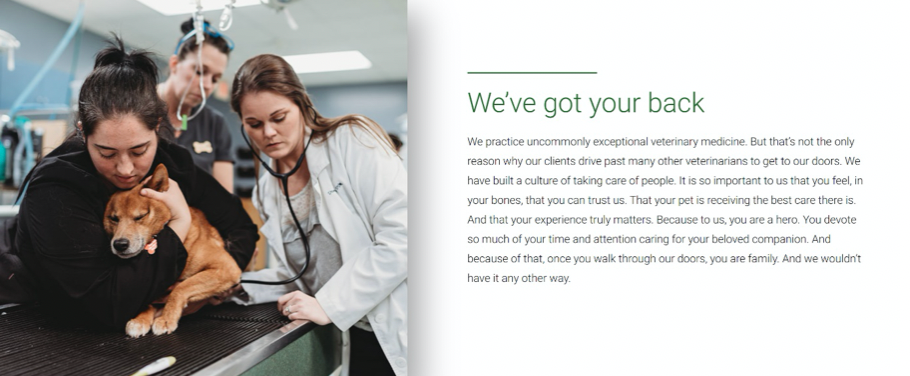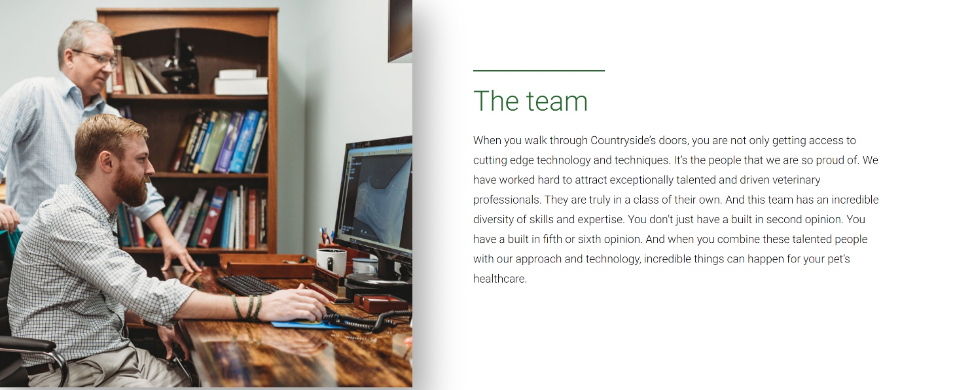How to create a veterinary practice website that wows
A hospital website that is both visually and emotionally inviting will generate more clients. Here’s how to make yours stand out.
MclittleStock / stock.adobe.com

The primary purpose of any veterinary practice website is to attract new clients, but what many people fail to recognize when creating their site is that the brain operates using 2 distinct neural systems that affect the viewing experience of potential clients. The strategy behind many practice sites speaks to the brain’s cortex, with straightforward facts and logic about who you are, what do you do, and where and when do you do it. But the brain’s cortex does not control emotions, social relationships, or decision making—that’s the job of the limbic system. And the limbic system is asking a different question altogether: Can I trust you?
The best websites create a compelling and emotional user experience, speaking directly to the limbic brain. This article introduces the actors in this fascinating play, outlines how trust emerges, and offers some practical steps you can take to attract the right clients via your website.
Speak to the limbic system
The brain’s cerebral cortex gives us the ability to reason, plan, and understand language. It is the defining feature of humanity and our brain’s most recent addition—it likely evolved to help our ancestors become savvier masters of their terrain, solve more complex problems, and think ahead.
The limbic system, on the other hand, controls our emotions and social behavior. It is full of practical vestiges of our early life as mammals, enabling us to quickly discern friend from foe, sew the seeds of cooperation, and bond with others.
When we meet someone new, our limbic system is always working out that question of trust: Should I put my faith in you? Are you safe to cooperate with? Or should I be wary? When trustworthiness is absent, you can feel it. You may experience this lack of trust when dealing with a seedy mechanic, when peering down a dark alley, or when engaging with a product or service on a website. The limbic system’s evaluation of social relationships is always at work, sussing out who we can cooperate with and who we should steer clear of.
If your website is not designed strategically to speak to the limbic brain, most pet owners will feel uncomfortable proceeding. They may rationalize their trepidation—perhaps they would like to look at other options, or maybe they’re just too busy to make a decision right now, among other reasons. But the real reason they choose not to check out your practice is because nothing on your website told them they could trust you.
Build trust
The subconscious brain acts fast, so communicating through emotion from the outset is the key to speaking to the limbic system. Within fractions of a second of viewing your site, the user starts discerning the safety and attractiveness of working with you. Canadian journalist Malcolm Gladwell calls this phenomenon “thin slicing,” and behavioral economists call it the “representativeness heuristic.” Basically, it means that we extrapolate early evidence to fill in the gaps that what we don’t know about someone or, in this case, a business. For example, if your site is modern, users are more likely to think you have a more modern approach to veterinary medicine.
Providing that evidence for the potential client viewing your website is not difficult. Your site’s fold—the area that appears on screen before scrolling down—should be contemporary and attractive, with messaging that accurately reflects your beliefs about veterinary care (more on this in a bit).
The best websites make you forget you are even on a website at all. Today’s software makes it easy to layer in HTML5 video backgrounds instead of still images. You can find plenty of stock videos that create an emotional experience for users, but the gold standard of website introductions is an HTML5 video background created with custom footage from your practice that captures interactions and connections among your team, your patients, and your clients. This is where the magic happens.
Get the messaging right
An uncluttered website filled with pictures or videos that evoke genuine emotional experiences is only one side of the coin. The other, more neglected element is messaging. Most veterinary practice websites use the same tone and tenor of messaging—mainly because they are speaking to the cortex. So, how do we speak to the limbic part of the brain?
It’s simple: Flip the script. Instead of writing primarily about your practice, write about how everything you do affects the pet owners who visit your practice. Here’s an example courtesy of Countryside Veterinary Hospital in Toney, Alabama.

You will notice a few things here. First, this image effectively illustrates the care, attention, and expertise of people working in the practice. You’ll also notice that the messaging highlights the hospital’s special workplace culture and its positive impact on pet owners and their animal companions. This practice is doing a great job of showcasing it strengths.
In the following example from the same website, Countryside makes it clear that one of its primary differentiators is the quality and depth of its team. But instead of crowing about how great they are, the website drives it home by defining how its team actually makes a difference in pets’ health. Again, the subject isn’t the practice but rather the pet owner.

Your website should highlight the main strengths of your practice. Intersperse pictures or videos that help tell the story, and drive the point home in a way that makes it all about the pet owner.
Next steps
Evaluate your practice website, page by page. Ask yourself about the emotional experience are you creating for visitors. Are you speaking to them in a meaningful way? Are you demonstrating empathy, building trust, and artfully positioning your skills and differentiators? The ultimate goal is to create a website that peels back the layers of the onion, gets to the heart of why you do what you do, and tells a story that makes the visitor go … “wow.”
Robert Sanchez is the founder and CEO of Digital Empathy, an award-winning web design and marketing firm for veterinary practices. He frequently lectures at national conferences, leads a team of wonderful employees, sits on the board of VetPartners, and shares his home with two very spoiled dogs—Cole and Lula.

The Future of Artificial Intelligence in Veterinary Diagnostics
May 2nd 2025Veterinary diagnostics are evolving fast - AI has the potential to make tests quicker, smarter, and more accurate. From blood analysis to imaging, innovations like Vetscan OptiCell™ and Vetscan Imagyst® are changing the game. Abhay Nayak, President of Global Diagnostics at Zoetis, gives his insights.
Read More




















